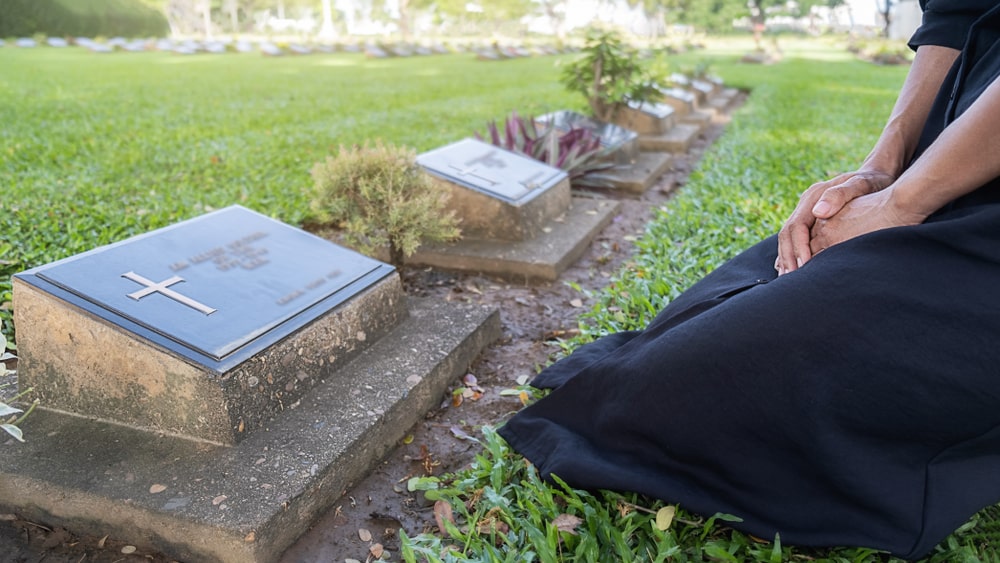
While we know that coloring is an excellent activity for children, did you know that it’s also a beneficial activity for adults? This can be especially true during the grief journey. After a loss, self-care is extremely important (though you may be tempted to overlook it). Because coloring promotes relaxation, reduces stress and anxiety, and even decreases blood pressure, it can be a useful self-care tool. To help you determine if coloring is something you should include on your grief journey, consider these 7 benefits.
1. Coloring creates a quiet, contemplative space
Grief comes with a lot of feelings, and some of them can be overwhelming. Anxiety, fear, worry, depression. When these emotions are filling your mind, it’s helpful to take time to pause, reflect, and calm your racing thoughts. Coloring can give you much-needed space to do so. And once those thoughts are manageable, you can begin to problem solve and sort through your feelings with more clarity.
2. Coloring reduces depression and anxiety
As strange as it may sound, there’s research out there showing that coloring can reduce anxiety and depression. In a 2017 study, 104 university students were asked to either color or complete a logic puzzle every day for a week. Of the 54 participants who chose coloring, each reported reduced anxiety and depression as compared to the beginning of the study. Another study from 2020 in older adults showed that 20 minutes of mandala coloring each day significantly reduced anxiety. On the whole, coloring has a calming effect, which leads to less depression and anxiety.
3. Coloring lowers stress levels
As with depression and anxiety, people also find that coloring lowers stress levels. The repetitive movement of coloring has a soothing effect. Because the activity is pleasant, simple, and fun, it takes the mind off any challenges or struggles, thereby lowering stress levels overall. When you have a lot going on in your personal life added to the stress of losing a loved one, coloring can help you sit quietly, perhaps with comforting music playing in the background. This time of solitude can work wonders on your personal well-being.
4. Coloring gives your mind a break
After the loss of a loved one, there’s a lot going on around you and inside your head. On some days, it may feel like too much to handle. It’s not easy processing your grief, running all the errands, working that job, taking care of the kids, and doing everything else you’re responsible for. By coloring just a few minutes a day, you can give your brain a break. Sometimes, you just need to set everything else aside so you can simply “be” in the present moment.
5. Coloring helps you sleep better
Because coloring eases stress and anxiety and promotes relaxation, it may be an excellent addition to your nightly routine. Too often, we stay on our smartphones and other electronic devices too long into the evening. The blue light these devices emit interferes with the production of melatonin, which is essential to good sleep. So, try putting away the phone or turning off the television at least an hour before bed. Instead, add reading or coloring to your routine to help you unwind before sleeping.
6. Coloring aids in processing emotions
We all express and process emotions a little differently, but for many people, art therapy is hugely beneficial. Creative activities like journaling, coloring and painting, dancing, or singing can have healing effects during times of grief. These activities require focus and concentration, which helps break the circular cycle of thoughts and emotions you may find yourself trapped in. So, try using your creativity to help you process what you’re feeling. By filling in the lines on a coloring page, you will find yourself relaxing and your thoughts clearing. And as you color, you will have time to calmly sort and organize your thoughts into something that makes more sense and feels manageable.
7. Coloring provides light-hearted moments
Losing a loved one can bring extra stress and responsibility with it. Were you part of planning the funeral service? Has the loss meant you have to take on more responsibility at home? With all the changes a death can bring to your normal routine, it’s important to take moments to step back. By coloring a little each day, you can add a little bit of light-hearted fun to your day. And even if you are in deep grief, don’t feel bad about seeking positive activities. You need to balance the good and the difficult during the grief journey, and coloring can tip the balance toward good on the tough days.
Now that you understand many of the benefits associated with color, you may be interested in giving the activity a try. If that’s the case for you, go to 10 Adult Coloring Books for Your Grief Journey to browse a few of the most popular adult coloring books out there.
But What If I Need More Help?
While coloring can help you on the grief journey, it’s certainly not intended to act as a cure. If you find that your grief is not lessening but is getting worse, it may be time to see a therapist. They can help you sort through all the feelings – good and bad – so you can find a healthy balance.
Here are a few signs that it may be time to connect with a therapist:
- Your mental health is affecting your ability to live your everyday like, including work, school, or relationships with others
- Your stress and anxiety are increasing, not lessening
- You are experiencing significant mood swings
- You are starting to experience conflict or discord in your personal or professional relationships
- Your normal coping strategies aren’t working
- You find yourself turning to unhealthy coping habits, such as substance use, impulsive spending, or self-harm
If you find yourself checking the box on any of these symptoms, consider finding a therapist in your area who can help you walk through your feelings of grief. You don’t have to live this way – it doesn’t have to be your new normal. Instead, with intentionality and professional attention, you can find healing and a way to move forward with hope.


























































